Best Camping Sleeping Pads
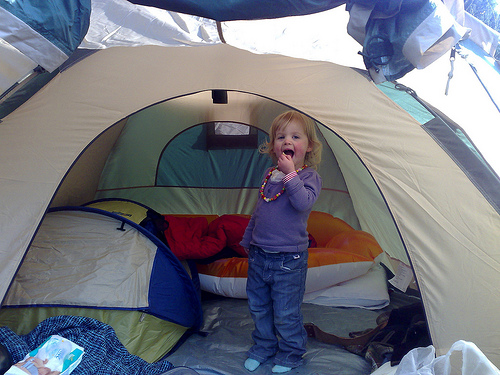 The sleeping pad is one of the many essential items you will need for a camping trip.
The sleeping pad is one of the many essential items you will need for a camping trip.
A sleeping pad not only cushions you from the hard, uneven ground but also provides a layer of insulation between you and the ground keeping your warmer and more comfortable.
There are basically four types of sleeping pads and each comes with its own level of comfort and advantages and disadvantages.
You can easily narrow your pad decision down to type based on the type of camping you will be doing.
Car camping? Choose the most comfortable sleeping pad you can find. You may be most comfortable with an air mattress or thick air pad.
Backpacking? You may need to skimp on comfort to find a lightweight pad that won’t break your back. Choose a lightweight foam pad, self-inflating pad, or air pad.
Winter camping? You’re going to want a pad with plenty of insulation so choose an insulated air pad or warm self-inflating pad.
When selecting a sleeping pad it usually comes down to the level of comfort you want, but the cost, weight, size, and ease of inflation will also factor in your decision. Here are the pros and cons of each sleeping pad type as well as some recommendations for the most comfortable and versatile sleeping pads.
Air Mattresses
Air mattresses are the thickest and most comfortable of all the sleeping pad types and the closest you’re going to get to the comforts of a real bed. Air mattresses are much thicker than all the other options and blow up with a foot pump, battery-powered pump, or a pump that runs off your vehicle’s cigarette lighter or accessory socket. Air mattresses are great for car camping and can also act as a comfy guest bed in the home too.
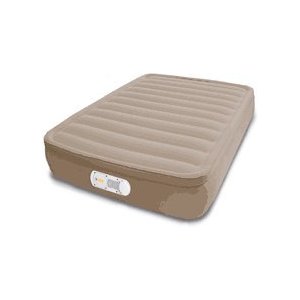
Pros:
- Very thick and comfortable
- Easy to inflate with a pump
- Available in twin, full, and queen sizes
Cons:
- Heavy and large
- Pump required for inflation
- Typically not insulated
- Can be punctured
Ideal Use:
- Car camping
Recommendations:
Self-Inflating Pads
With excellent comfort and compact size, self-inflating pads have been the standard for backpackers for years. Thicker self-inflating pads can also be plenty comfortable for car camping.
When a self-inflating pad is unrolled and the valve is open the pad literally inflates itself. The firmness of the pad can be easily adjusted by applying pressure to the pad with the valve open. To deflate, just roll up the pad and stash in your pack. When not in use, it is best if the self-inflating pad is stored with the valve open to ensure the longevity and comfort of the sleeping pad.
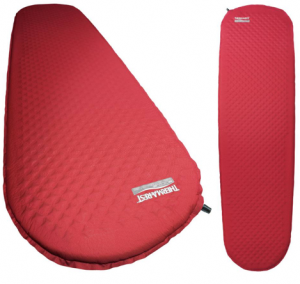 Pros:
Pros:
- Wide range of thickness and comfort
- Insulated
- Self-inflating – no pump needed
- Compact
- Less expensive compared to air pads
Cons:
- Can be punctured
- Heavier and more expensive than foam pads
Ideal Use:
- Car camping
- Backpacking
- Winter camping
Recommendations:
- Therm-a-Rest ProLite Plus Sleeping Pad – Super warm, light, and compact sleeping pad
- Alps Mountaineering Lightweight Series – Light, thick, and great price
Air Pads
Air pads are the latest rage in backpacking sleeping pads. Air pads need to be manually inflated by mouth or by a built-in air pump. Some models are insulated with synthetic or down fill to increase warmth. If the air pad is not insulated it is really only good for mild conditions since the air pad by itself offers poor circulation since air freely circulates inside of the pad keeping the pad as cold as the ground.
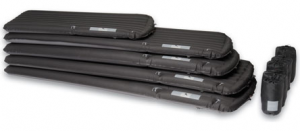 Pros:
Pros:
- Comfortable
- Thick cushion
- Insulated version can be used for 4-season camping
Cons:
- Noninsulated versions offer poor circulation
- Insulated versions are expensive
- Can puncture although most air pads come with repair kits
Ideal Uses:
- Car Camping
- Backpacking
- Winter camping insulated versions)
Recommendations:
- Exped DownMat 9 Air Pad – down-filled sleeping pad
- Big Agnes Insulated Air Core Sleeping Pad – comfortable, lightweight sleeping pad
- Big Agnes Diversion Recycled Sleeping Pad – sleep in comfort and good conscious
Foam Pads
Foam pads are the minimalist’s sleeping pad. Foam pads look like an egg crate that rolls or folds up nicely so you can easily stash it in your backpack. I would have to say that the foam pad is the least comfortable of all the sleeping pad options but it is the cheapest, lightest, and simplest pad. Although they are the least comfortable they still do provide some cushion and are better than sleeping on the cold, hard ground. Foam pads are best left for the long distance hikers and ultralight backpackers.
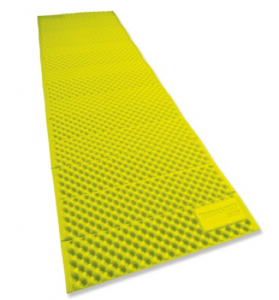 Pros:
Pros:
- Lightweight
- Inexpensive
- Tough – won’t puncture
- Provide insulation
Cons:
- Least comfortable
- Not compact
Ideal Uses:
- Backpacking
Recommendations:
- Therm-a-Rest Z Lite Mattress – ultralight camping mattress
- Coleman Rest Easy Camp Pad – inexpensive, simple camping pad
Having the right sleeping pad can seriously make or break your trip. Paired with the best sleeping bag, a sleeping pad will keep you comfy and toasty in just about any condition. If possible, visit your favorite outdoor store and try out some different sleeping pads before making your choice.
[Photo courtesy of jaygooby]